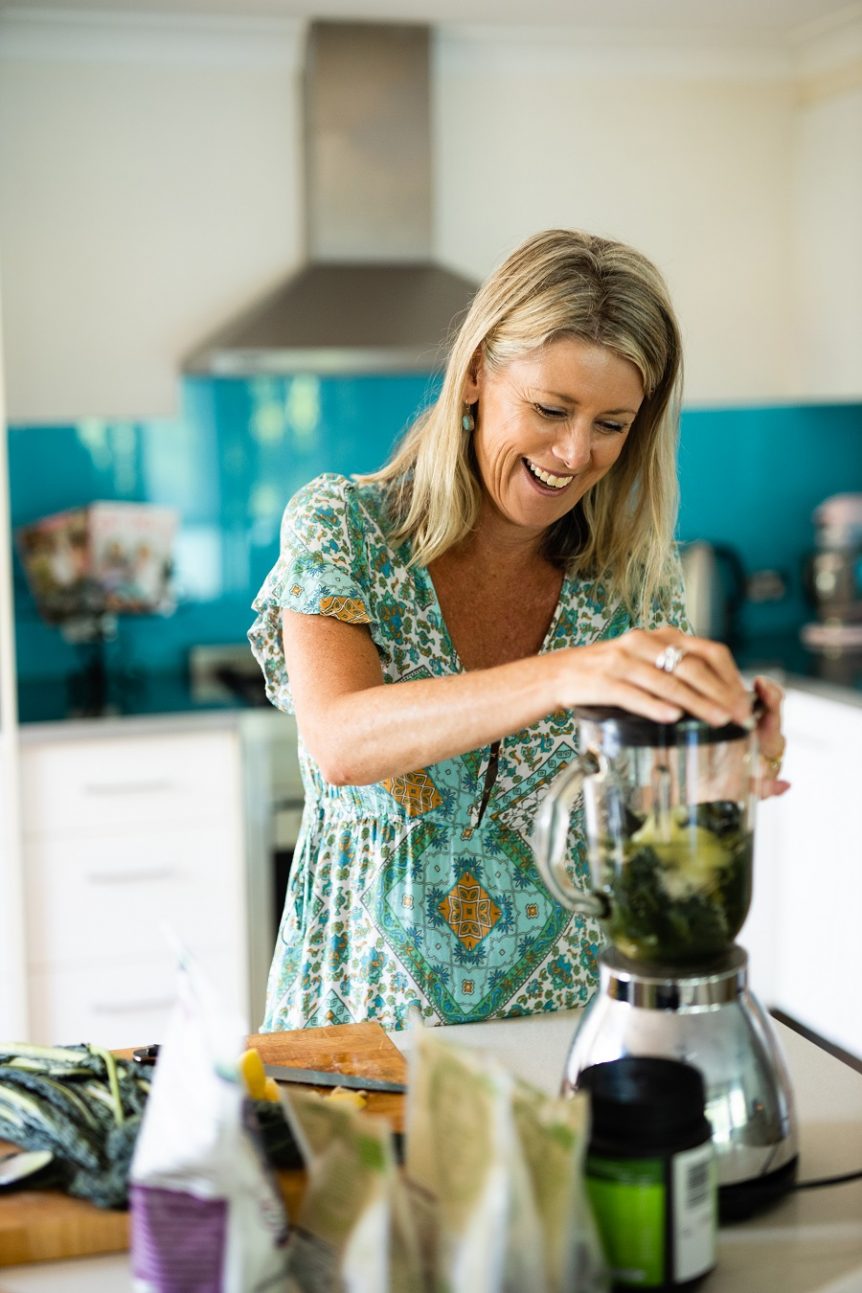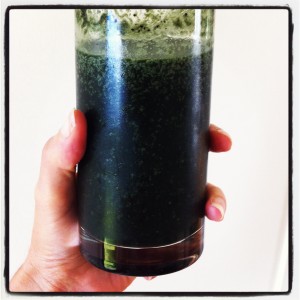It’s no secret I’m a green smoothie fan – I’ve been banging on about them for almost a decade.
They’re fast, simple and versatile, and by adding certain ingredients they can be a powerhouse of nutrition. They’re quite simply, one of the easiest options for busy women who don’t have time to make a meal for themselves or who don’t like to spend much time in the kitchen.
Now that they’ve gone mainstream, you can pick up a version of a green smoothie when you’re out and about, but I rarely find any that are what I would call ‘healthy’ – they often have too much fruit for my liking, or protein powders I wouldn’t opt for. I’m not anti-fruit – I just don’t like super sweet smoothies and prefer more veg in them, which is healthier anyway. I’m not anti protein either, but many commercial powders are based on whey or contain sweeteners and fillers, so again, not a super healthy option and quite often expensive.
Fortunately, it’s easy to make your own and take it with you – when I was still working in the newsroom I’d make them on the weekends and freeze them, and simply take one to work each day.
When it comes to simple answers to live a little healthier and improve your wellbeing on a daily basis, these guys are hard to go past. And with the addition of some different ingredients, you can pimp out your green smoothie to suit both your taste, and your nutritional needs.
My favourite green smoothie ingredients
Dark kale or baby spinach – these are my green leaves of choice. Neither has a very strong flavour, and the spinach blends really well (I don’t have a high speed blender). I’m not going to go into the health benefits of each of them – they’re both loaded with vitamins and minerals, as well as antioxidants and fibre. Here’s an article that looks at the nutrition profile of each if you’re so inclined to want to know the details. I don’t worry about the minutiae of nutrients – I use what comes in the my veggie box delivery for the most part, and try and mix it up so I’m not always having the same thing (you want variety so as not overload on the same nutrients all the time, and to plug any nutrient gaps. Plus variety being the spice of life and all of that).
Seeds – specifically sunflower and pumpkin seeds. These guys are a good source of healthy fats as well as vitamins and minerals. They also contain tryptophan, an amino acid your body uses to make serotonin, one of your happy hormones that helps stabilise moods and also promotes sleep. Sunflower seeds are a good source of vitamin E, which I’m keen on because I’ve had a lot of skin cancer – and the subsequent treatments and surgeries for), so I’m always trying to support my skin health a little more. The seeds add a lovely flavour and they are cheap – much cheaper than buying a vitamin supplement.
Hemp seeds – called a seed but technically a nut, I add a tablespoon of these guys for their protein content as it’s more important to maintain adequate protein intake as we age. As their friends above, hemp seeds are rich in healthy fats and vitamins (hello vitamin E) and minerals, but they are also a great source of protein – they are around 25-30 percent protein and are one of the few plant-based complete proteins, meaning they contain all nine essential amino acids. I also like their flavour – it’s quite nutty. I buy them in the supermarket and again, they’re inexpensive for what they give you.
Avo – it makes the smoothie much more of a meal and far more filling, and nutritionally they are one of the best sources of healthy fats you can add. Half an avo will turn your green smoothie (or berry or chocolate one for that matter) into a super thick and smooth concoction.
Collagen – again, I use this as a protein source. Collagen makes up about a third of our body’s protein – think hair, nails, skin, muscles, tendons, even your teeth has some. There are different forms of collagen, used by the body for different purposes, and as we age, our body produces less – and a lower quality – collagen (which we see in our skin elasticity and feel in our cartilage). Here’s a good explainer to read. Collagen has probably become the latest ‘superfood’ buzz (as you can tell by the enormous amount of products and powders now available) but I’ve been using it, and gelatin, in my diet for years (including through bone broth). Occasionally I’ll pop a spoon full in my tea or coffee (hydrolysed collagen doesn’t set like gelatin, it dissolves in hot or cold liquid) or add it to my chia pudding. If you choose to use it, check the source as collagen can be derived from cows, chicken or fish and eggs (beware if you have allergies). I always look for products that come from animals that were grass fed/pastured. More studies are being undertaken on the benefits of collagen for skin and join pain. Here’s one, and another, and another.
Extra f & v – a chunk of lemon (seeds and skin removed), a slice of fresh ginger, a chunk of cucumber and/or zucchini, a slice of fresh tumeric, a handful of sunflower sprouts (or whatever is on hand) are all great green smoothie ingredients. All of these regularly make it into my blender, depending on what is in the fridge. The idea is always to add as much veggie power, nutrients and anti-inflammatory ingredients as I can. There are literally thousands of green smoothie ingredients that you could put on rotation in your kitchen, but I’m a real advocate for less is more and to keep it simple – you’re more inclined to make them if they don’t require too much effort or expense.
Extra tip: If the thought of having to clean the blender puts you off making these, after you’ve poured your smoothie, add some water to the blender jug and put it back on for a couple of seconds. Practically cleans itself.

BE #BALANCEDIN10
#
TAKE THE FREE Balanced in 10 MINI COURSE
Enrol here and start feeling more balanced today, 10 minutes at a time.
Receive the lessons directly to your inbox.




